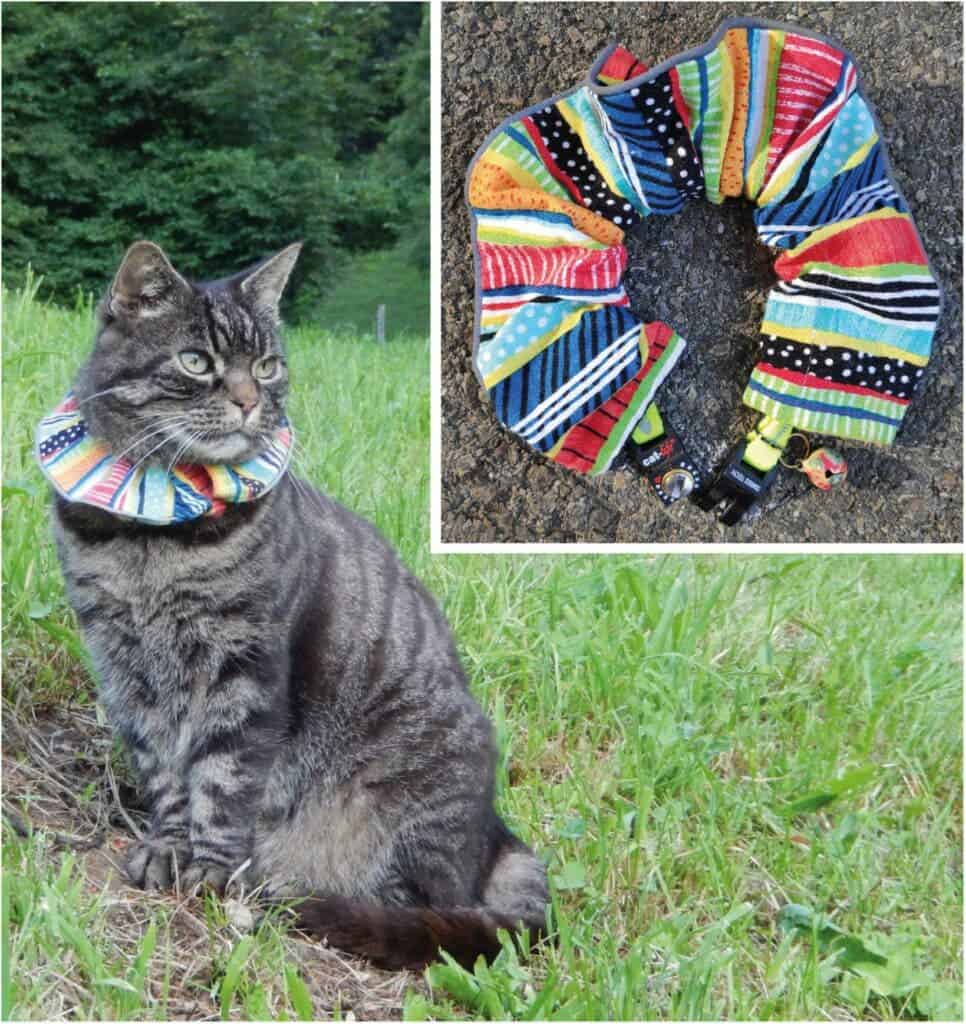Your adorable little house cat may act cute and lovable, but deep inside they’re fierce predators — just ask the local birds. In some places, predation by house cats is rampant and entire populations of birds have been wiped out. Those who are well aware of this sometimes responsibly fit a bell to their cats’ collars to give birds a heads up so they can scoot to safety. A new study confirms that not only does this work in reducing the number of killed birds, but also found that adding colorful ornamentation on the collar greatly further reduces predation.

Domestic house cats (Felis catus) are not only exceptional stalking predators, but they’re also incredibly numerous. In Switzerland, for instance, there are more than 40 cats for every red fox, a wild predator in the same area. It’s no wonder that the number of birds and small mammals killed by cats every year is in the billions.
The vast majority of U.S. households own at least one pet and according to a national pet owners survey, there were approximately 95.6 million cats living in households in the United States in 2017. Along with dogs, cats are the most popular pets.
Due to the potential negative impact of cats on wildlife populations as well as animal welfare implications of cats injuring wildlife, animal welfare advocates and wildlife biologists have called for measures to tame this massacre. Keeping cats indoors as much as possible is one way to minimize attacks on wildlife, but that may not always be possible. Other solutions include adding a simple bell to the cat’s color or more modern electronic devices that make noises.
The bell, however, isn’t always efficient because cats learn to suppress the bell sound while they’re hiding and standing still. By the time the cats pounce, the bell alert is registered too late for the bird to escape.
Another relatively new measure is the Birdsbesafe collar-cover (BBScc), a brightly colored ornamentation around the cat’s neck that acts as anti-camouflage to overcome their stealth. To birds, this ornamentation sticks out like a sore thumb. A 2021 study out of the University of Northern British Columbia in Canada found that rainbow-colored ruff collars reduce the number of birds the felines are able to hunt.
In a new study, researchers in Switzerland wanted to see the impact of using both a bell and BBScc collar on cat hunting efficiency. They collected data from 26 households with 31 cats, which wear either a colored collar or both a collared collar and bell.
The colored collar reduced the number of birds brought home by the house cats by 37% but there was no reduction in the number of killed mammals. However, adding a bell to the colored collar reduced the number of both dead birds and small mammals brought home by up to 62%. These are conservative estimates since a fourth of the birds that could be dissected were found to have been killed in accidents, such as being hit by a car, prior to contact with the cat, which ultimately carried it back home.
Most cats got used to their collars despite initial protests, though some frequently scratched their necks suggesting not all cats will stand wearing such a flamboyant collar.
“Most participating cat owners had a positive attitude toward the BBScc and said that they were willing to use it after the study. However, cat owners reported that their social environment (e.g., neighbors, family, friends) was relatively skeptical, which indicates a need for communication. To conclude, commercially available devices with visual and acoustic stimuli are straightforward and effective ways to mitigate the potentially harmful effect of domestic cats on wildlife,” the researchers reported in the journal Frontiers in Ecology and Evolution.



